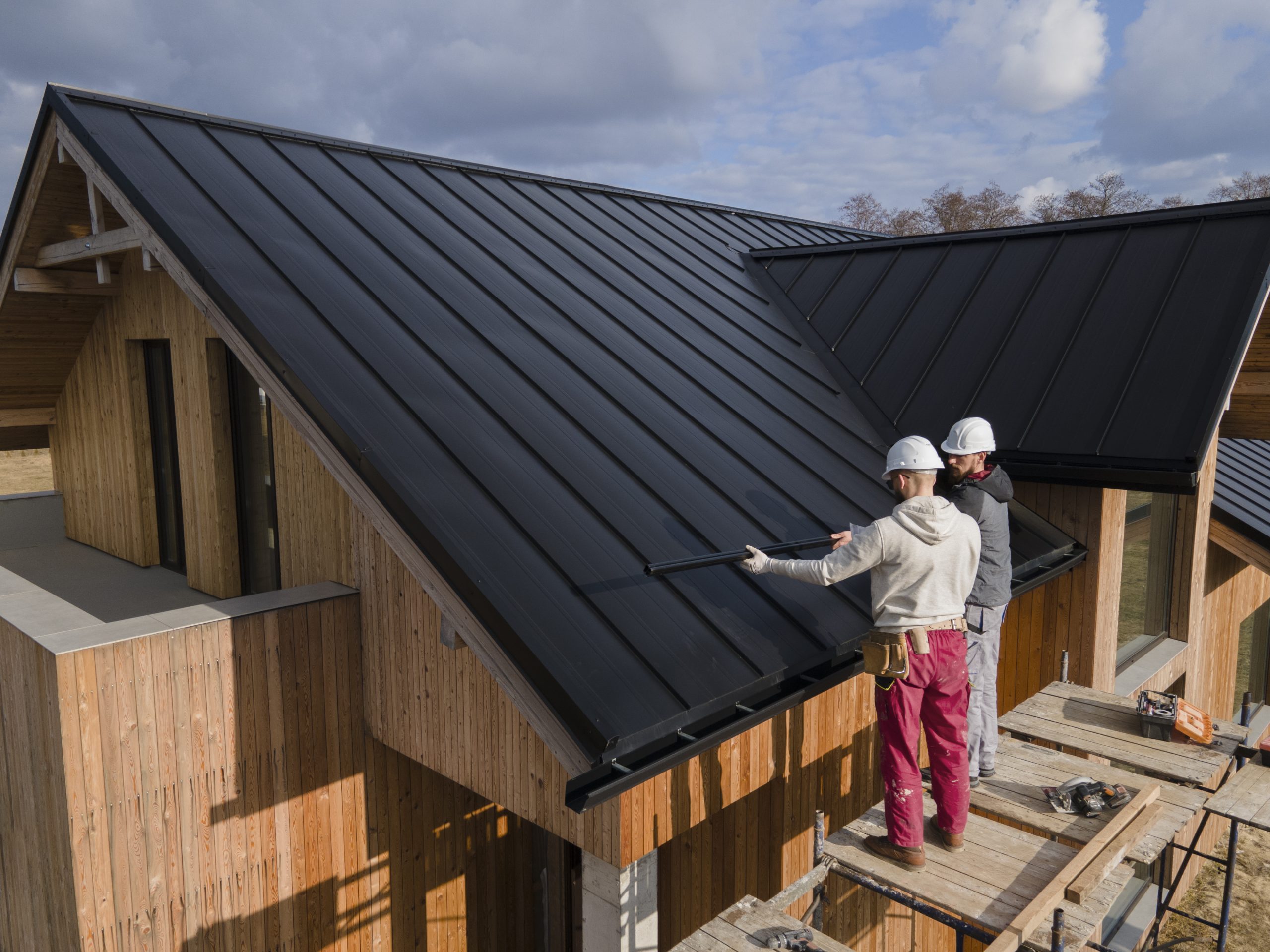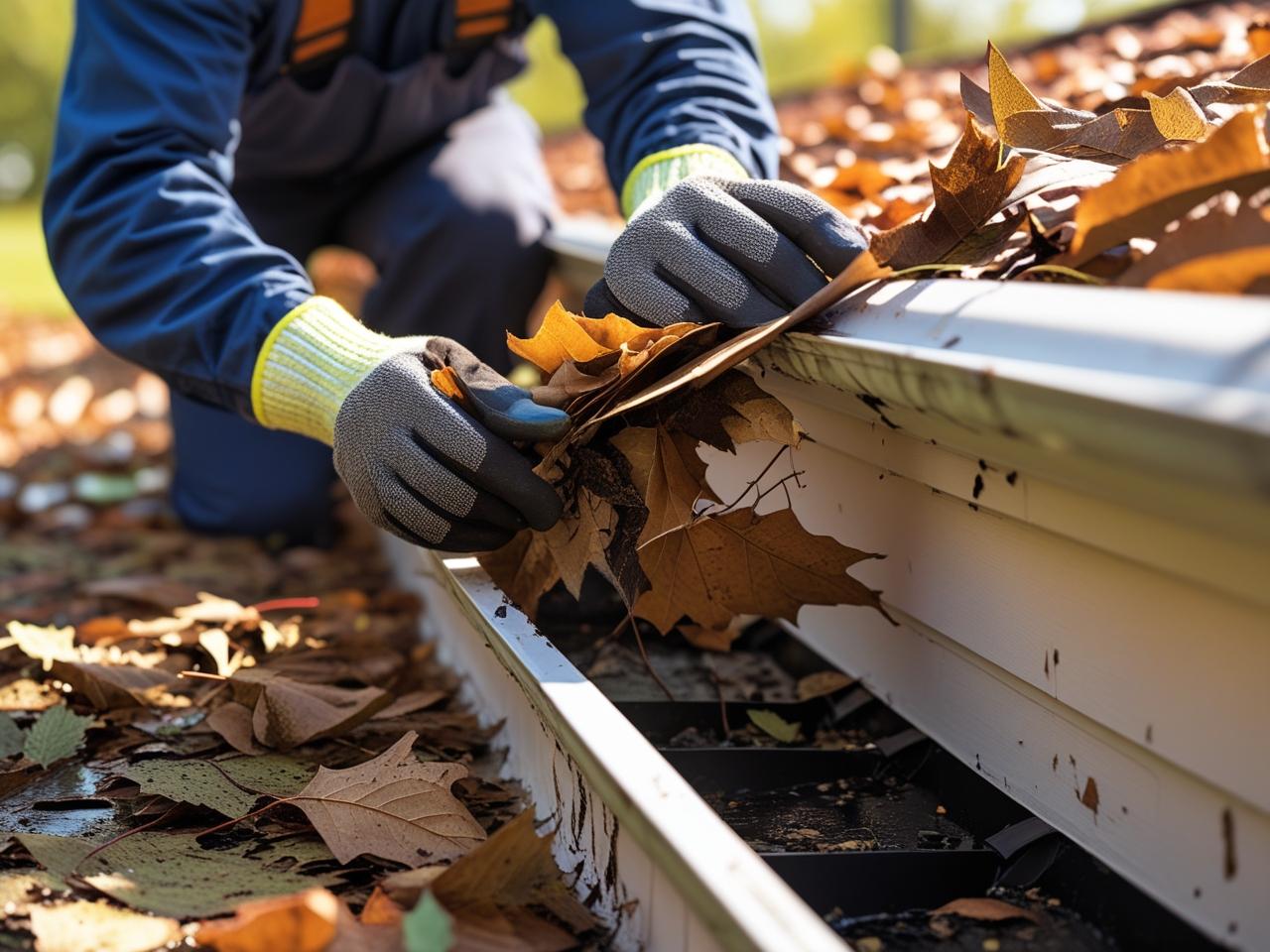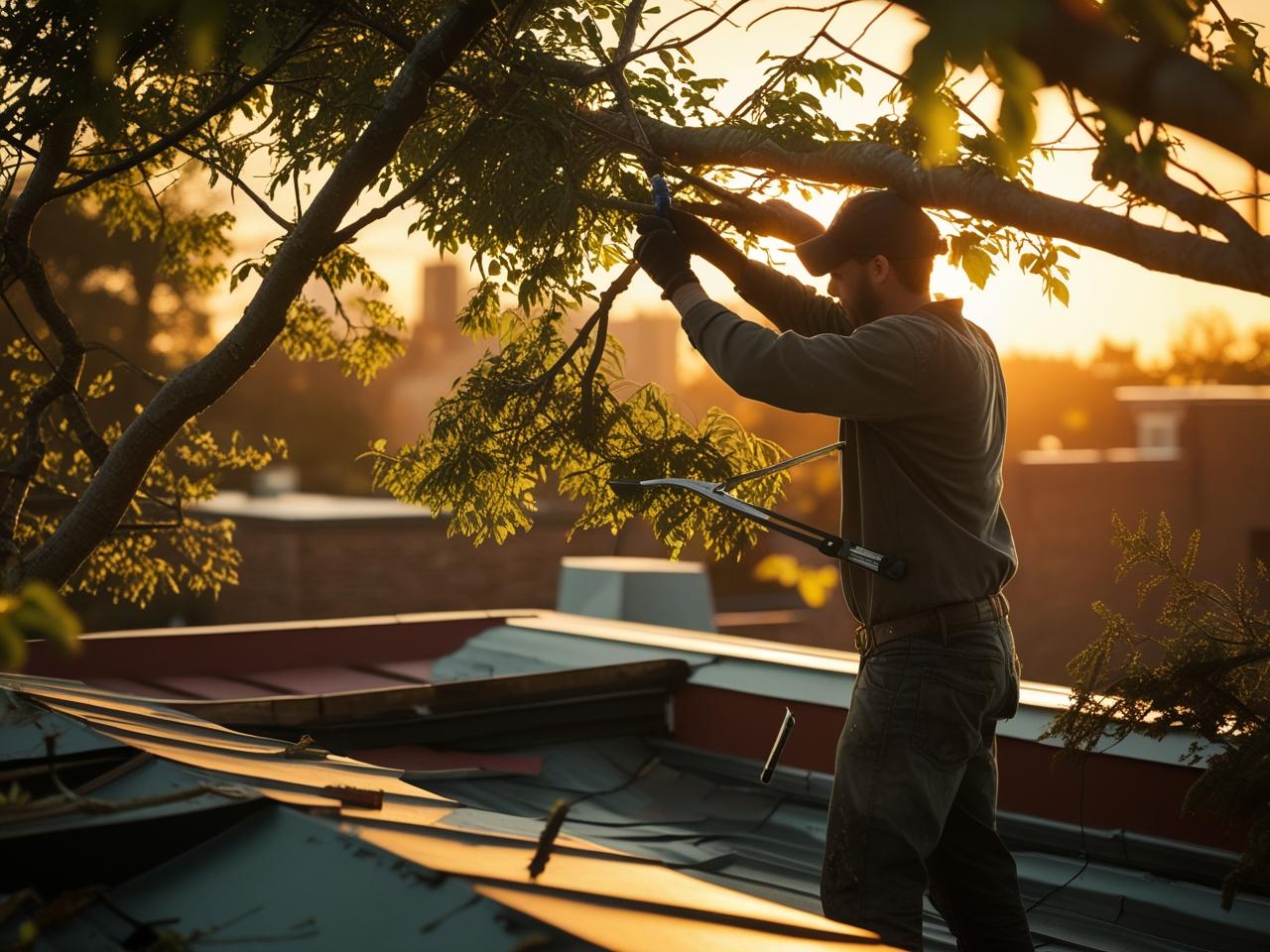
How to Prepare Your Roof for Hurricane Season: A Complete Roof Maintenance Checklist
According to Bankrate’s 2023 Extreme Weather Survey, 57% of U.S. adults reported experiencing expenses from extreme weather events—including hurricanes, tornadoes, wildfires, earthquakes, floods, or heavy snow—within the last decade.
Knowing this, preparing for hurricane season becomes a necessity. Among the most vulnerable parts of any structure during a storm is the roof. A well-maintained roof can withstand high winds, driving rain, and airborne debris, protecting everything beneath it.
That’s why this comprehensive roof maintenance checklist is essential for protecting both residential and commercial properties in storm-prone areas like Wappingers Falls, NY.
Table of Contents
Key Takeaways
✔ Use a roof inspection checklist to spot damage to shingles, flashing, seals, and decking before storms hit.
✔ Clean gutters, roof valleys, and drains to ensure all drainage areas are clear and prevent water buildup and structural damage.
✔ Install hurricane straps, stronger nails, and seal underlayment to reinforce structural attachments and secure the roof against wind uplift.
✔ Fasten vents, skylights, solar panels, and antennas properly to secure roof accessories and reduce risks from flying debris.
✔ Cut back limbs, assess tree health, and remove high-risk trees to trim vegetation near the roof and prevent storm impact.
✔ Schedule annual expert evaluations to get a professional inspection that uncovers hidden issues and guides preventive repairs.
✔ Understand your coverage, document roof condition, and organize paperwork to review warranty and insurance effectively before storm season.
✔ Fix minor issues early, stock repair supplies, and create a storm response plan to make emergency repairs and preparations in advance.
1. Inspect the Entire Roof Structure
A thorough inspection is the starting point of any effective roof maintenance checklist. This helps identify vulnerabilities before a hurricane turns them into costly problems. For facility managers, integrating this into a commercial roof maintenance checklist ensures regulatory compliance and long-term asset protection.
Skipping routine inspections often results in overlooked damage that escalates quickly. In fact, total roof repair and replacement costs in the U.S. surged to nearly $31 billion in 2024—a 30% increase from just two years prior.
- Examine shingles and tiles: Check for signs of deterioration such as cracking, curling, blistering, or granule loss. Damaged shingles reduce your roof’s ability to shed water and resist wind uplift.
- Look for punctures or soft spots: Step carefully on the roof (or use binoculars from the ground) to detect soft areas, which could indicate compromised decking or trapped moisture beneath.
- Inspect flashing at critical joints: Pay special attention to flashing near chimneys, sidewalls, valleys, and dormers. Damaged or corroded flashing is a common cause of leaks during storms.
- Check seals around roof penetrations: Vents, pipes, and HVAC connections should be surrounded by intact, weatherproof seals. Cracks or missing caulking need immediate attention.
- Review ridge caps and hips: These areas take the brunt of wind pressure. Ensure ridge caps are firmly fastened and not deteriorated.
- Inspect the underside from the attic: Go into the attic and look for daylight coming through the roof boards, water stains, or signs of mold. These are early indicators of leaks or insulation failure.
- Document findings using a roof inspection checklist: Note locations, severity, and type of damage. This documentation is vital for both insurance and scheduling repairs.
2. Clean and Clear All Drainage Paths

Efficient drainage protects your roof from water damage, mold growth, and structural strain. Blocked gutters or outlets are among the top culprits in hurricane-related roof failure. Drainage should be a top priority in any home roof maintenance plan or commercial roof maintenance checklist, especially in regions prone to hurricanes.
- Clear gutters and downspouts: Use gloves or a gutter scoop to remove leaves, nests, dirt, and other obstructions. Rinse with a hose to ensure smooth flow.
- Flush roof valleys and drains: Flat or low-slope areas accumulate debris more quickly. Clear these spaces regularly to avoid ponding water.
- Secure gutter attachments: Reinforce brackets and hangers using corrosion-resistant screws. This helps prevent detachment during strong winds or heavy rain.
- Install gutter guards if needed: Mesh screens or foam inserts reduce maintenance frequency and help ensure uninterrupted drainage.
- Check for water stains on siding or fascia: These marks indicate past overflow or drainage failure. Adjust the slope or replace misaligned sections if necessary.
3. Reinforce Roof Attachments
High winds during a hurricane can create uplift pressure that compromises roof integrity. Strengthening structural attachments is a vital item in every roof maintenance checklist. All of these reinforcements should be noted in your roof inspection checklist and prioritized in any commercial roof maintenance checklist where asset protection is critical.
- Install hurricane straps or clips: These metal connectors bind the roof trusses to the home’s frame, greatly improving wind resistance. They’re especially critical in coastal and storm-prone areas.
- Replace or upgrade roofing nails: Use ring-shank nails, which provide a stronger grip than smooth-shank nails. For maximum strength, space them closer together than standard building codes require.
- Use hurricane-rated screws in critical areas: Screws offer even greater pull resistance than nails. Ideal for securing sheathing, decking, and edge strips.
- Reinforce roof decking: Check that decking is nailed or screwed down tightly. Apply construction adhesive along rafters to further secure panels and reduce shifting during storms.
- Seal the roof deck with underlayment: Self-adhering waterproof membranes protect the roof even if shingles blow off. This underlayment adds a crucial moisture barrier to your roof maintenance tips toolkit.
- Strengthen the connection between the roof and exterior walls: Use wall-to-roof tie-down systems or retrofitting hardware. These upgrades may also help reduce insurance premiums.
4. Inspect and Secure Roofing Accessories
Accessories like vents, skylights, and satellite dishes often go unchecked, but they’re some of the first things to fail in high winds. Properly securing these elements is an essential part of your roof maintenance checklist. In any commercial roof maintenance checklist, these components are key to reducing the risk of damage and liability from flying debris or interior leaks.
- Examine roof vents and fans: Ensure that all attic fans, exhaust vents, and turbine ventilators are bolted down and sealed with high-quality weatherproof caulk. Loose vents can easily tear away during strong gusts.
- Tighten or replace vent boots and pipe collars: These small but essential parts often dry out or crack. Replace them with newer, hurricane-rated versions to maintain waterproofing.
- Inspect skylights and their seals: Confirm that skylights are anchored with hurricane-approved fasteners. Apply new flashing or sealant around edges if you spot any gaps or wear.
- Secure solar panels and racking systems: Solar panel mounts should meet local wind uplift codes. Ensure no wires are exposed or loosely hanging, as these can get torn out or cause leaks.
- Remove or secure satellite dishes and antennas: Unused satellite equipment should be removed entirely. For active installations, use heavy-duty brackets and confirm that they’re tightly fastened.
- Check all roof penetrations: HVAC exhausts, plumbing stacks, and chimney caps should all be tested for movement. Apply fasteners or brackets as needed.
5. Trim Overhanging Branches and Nearby Trees

Falling branches are one of the most common causes of roof damage during a hurricane. Tree maintenance is an often-overlooked part of a solid roof maintenance checklist, yet it can prevent thousands in potential repairs. Regular trimming and tree inspection should be logged as part of your commercial roof maintenance checklist, especially for properties with extensive landscaping or trees near structures.
- Cut back overhanging limbs: Trim all branches that reach within 6–10 feet of your roof’s surface. Strong winds can turn even healthy limbs into destructive projectiles.
- Inspect trees for decay or disease: Look for signs such as fungus growth, hollow trunks, peeling bark, or cracked limbs. Trees in poor health are more likely to collapse during a storm.
- Assess tree stability after heavy rain: Water-saturated soil can loosen roots, especially in tall or top-heavy trees. Leaning trees near the building should be evaluated by a professional arborist.
- Remove high-risk trees entirely: If a tree is structurally unsound and located close to your building, complete removal is often the safest option.
- Clear fallen branches and debris from the roof: Even small branches can clog drainage paths or damage shingles. Periodic clearing should be part of every home roof maintenance schedule.
6. Schedule a Professional Roof Inspection
Professional inspections bring technical expertise that goes beyond what’s possible through DIY checks. Including this in your seasonal roof maintenance checklist ensures no detail is overlooked. A third-party expert view is a powerful tool, especially when backed by documented evidence that supports repairs or insurance claims.
- Hire a licensed and insured contractor: Select a roofing professional with credentials, insurance, and experience in storm preparedness. This ensures compliance and peace of mind.
- Request a full inspection report: The report should include photographs, notes on areas of concern, and recommendations for repair. Use this to plan next steps or validate insurance coverage.
- Discuss condition-specific recommendations: Professionals can suggest targeted solutions based on your region’s typical storm patterns and roof type—whether asphalt, metal, tile, or flat.
- Review flashing, underlayment, and penetrations: Contractors often use infrared or drone technology to inspect these hidden vulnerabilities, ensuring a thorough check not possible from ground level.
- Ask about preventive upgrades: Consider reinforced flashing, impact-resistant shingles, or improved ventilation—these roof maintenance tips can significantly strengthen your home against storm damage.
- Schedule recurring annual inspections: Make this part of your standard home roof maintenance plan or integrate it into a structured commercial roof maintenance checklist for routine compliance.
7. Review Your Roof’s Warranty and Insurance Coverage
Understanding what protections are in place before a storm is just as important as physical maintenance. This often-overlooked step should be a standard part of your roof maintenance checklist.
- Check warranty terms and exclusions: Review your roof’s installation and materials warranty. Some only cover manufacturing defects, while others may exclude weather-related incidents.
- Confirm wind and storm damage coverage: Many homeowners’ policies exclude hurricane or flood-related roof damage unless specific endorsements are added. Call your insurer to clarify coverage limits.
- Take photos and video documentation: Create a digital archive of your roof’s current condition. Capture wide angles and close-ups of all surfaces, accessories, and vulnerable points.
- Keep maintenance records organized: File all invoices, inspection reports, and repair documentation in one place. This can expedite claims and prove proper upkeep.
- Ask about deductible amounts and claim process: Understand what you’ll be responsible for in case of damage, and prepare the paperwork needed in advance—one of the often-overlooked roof maintenance tips that can streamline insurance claims.
- Include this review in your checklist annually: Update your insurance and warranty review each year as part of both your home roof maintenance and commercial roof maintenance checklist.
8. Make Emergency Repairs and Plans
Preparation for storm-related emergencies should not be reactionary—it must be built into your regular roof maintenance checklist to minimize downtime and damage. Emergency preparedness not only reduces potential damage but also speeds up recovery, saving time, money, and stress after a hurricane.
- Fix small issues before they escalate: Seal minor leaks, replace a few loose shingles, and patch cracks immediately. These can become catastrophic entry points during a storm.
- Create an emergency repair kit: Store key items such as heavy-duty tarps, roofing nails and a hammer, flashlights with spare batteries, sealant or roofing tape, and safety gloves and ladder stabilizers
- Identify 24/7 roofing contractors in advance: Don’t wait until after a storm hits. Research and store contact details for emergency roof repair providers ahead of time.
- Map out a response plan: Know how to shut off utilities in the event of a roof breach. Create a chain of communication among household members or building staff.
- Review procedures with the insurance carrier: Understand how to report damage and what immediate steps are expected. Many policies require mitigation within a short timeframe.
- Train staff (for commercial properties): If you manage a business facility, assign team members to specific emergency roles. Incorporate this protocol into your commercial roof maintenance checklist.
How to Choose Professional Roofing Services
Hiring the right roofing contractor can mean the difference between lasting protection and costly future repairs. This decision should be an intentional part of your roof maintenance checklist, especially when preparing for hurricane season.
- Confirm licensing and state compliance: A legitimate roofing contractor must be licensed in your state and familiar with local building codes. This ensures legal compliance and workmanship accountability.
- Verify liability insurance and workers’ comp: Ask for proof of both insurance types. This protects you from being held responsible for injuries or damages incurred during the project.
- Check specialization in hurricane-resistant systems: Contractors should have experience with materials and methods tailored to high-wind zones, such as reinforced flashing, impact-rated shingles, and sealed underlayments.
- Review online ratings and testimonials: Explore sources like Google, Better Business Bureau, and industry-specific platforms. Patterns of satisfied or dissatisfied clients can tell you a lot.
- Request references and project portfolios: Ask for recent examples of work and speak directly with past clients. Inquire about timeliness, professionalism, and how well the roof has held up over time.
- Demand a detailed, written estimate: A reputable contractor will break down costs for labor, materials, permits, and timelines. Avoid those who offer vague or verbal quotes.
- Understand warranty coverage: Clarify what is covered under the labor and material warranty, and for how long. Ensure the warranty terms are in writing and include hurricane-related issues where applicable.
- Ask about emergency availability: Roofing emergencies don’t always happen during business hours. Choose a contractor who offers emergency support or storm recovery services.
- Ensure clear communication and project planning: Good contractors explain processes, answer questions, and keep you informed throughout the project. Poor communication is a red flag for future misunderstandings.
- Include in commercial planning: If you manage a facility, hiring vetted professionals should be a formal step in your commercial roof maintenance checklist to maintain operational readiness and limit liability.
Frequently Asked Questions
Roof maintenance includes inspecting shingles, flashing, and seals, clearing debris from gutters, and checking for water damage or mold. It’s important to address small issues like cracked tiles or loose nails before they lead to major repairs. Regular inspections and cleanings keep the roof in strong, storm-ready condition.
General roof maintenance involves routine inspections, debris removal, gutter cleaning, and minor repairs to prevent damage. It ensures proper drainage and helps extend the lifespan of roofing materials. Keeping up with general upkeep also supports warranty compliance and improves home safety.
Roofs should be cleaned at least once or twice a year, preferably in spring and fall. More frequent cleaning may be needed in areas with heavy tree coverage, algae growth, or severe weather. Keeping the roof clean helps prevent water pooling, staining, and premature material breakdown.
Homeowners insurance typically does not cover routine roof maintenance or wear and tear. It generally only covers damage caused by sudden events like storms or falling debris. Maintaining your roof is considered the homeowner’s responsibility.
Severe weather, such as high winds, hail, and heavy rain, causes the most damage to roofs. Other common threats include poor drainage, tree limbs, and lack of maintenance. Over time, even small issues can lead to major structural problems if not addressed.

Protect Your Home with Help from Roofer of Wappingers Falls LLC!
Don’t wait until a storm hits—take action now to safeguard your roof with expert support. For reliable inspections, repairs, and full-service maintenance, trust Roofer of Wappingers Falls LLC. As a top-rated local contractor, Roofer of Wappingers Falls LLC proudly serves Wappingers Falls, NY, with experience in hurricane-resistant solutions tailored to the region.
Protect your investment and gain peace of mind—contact Roofer of Wappingers Falls LLC today!
